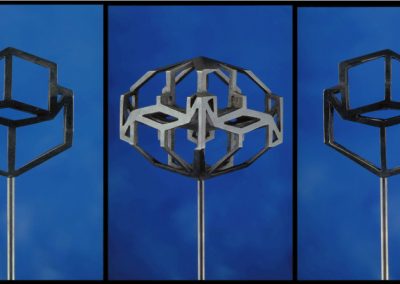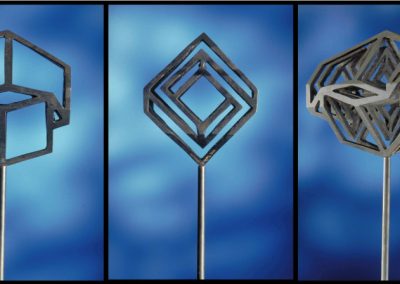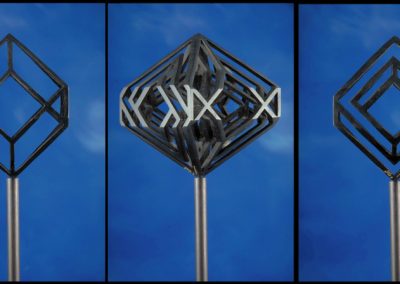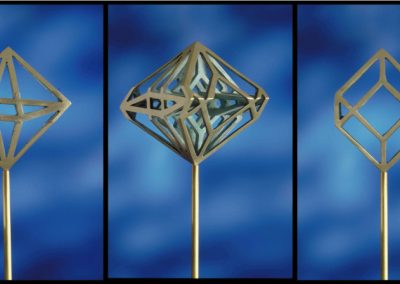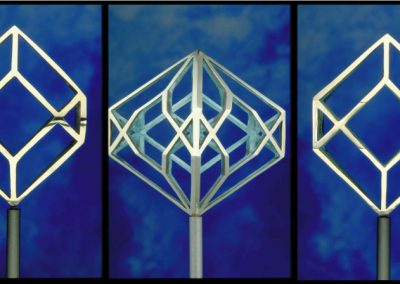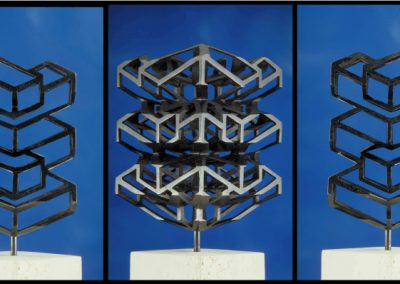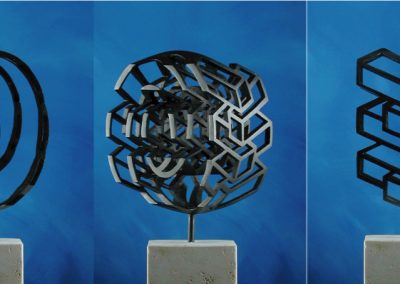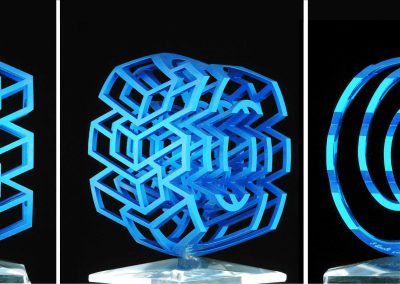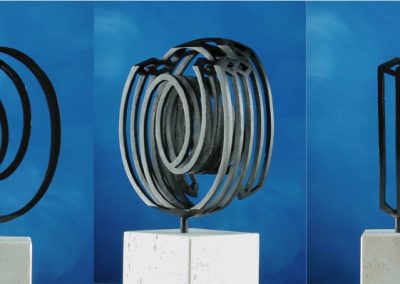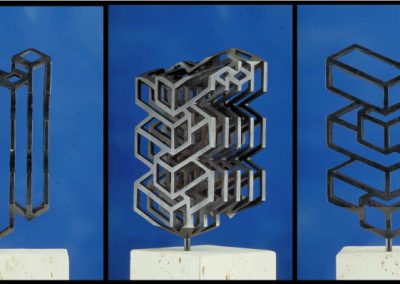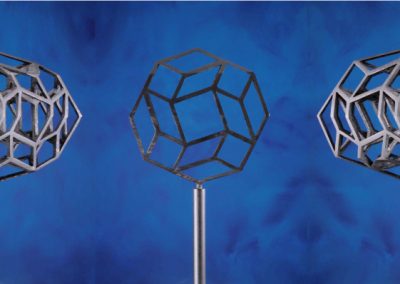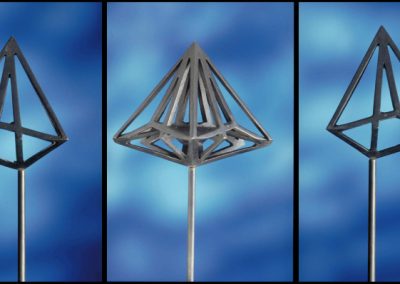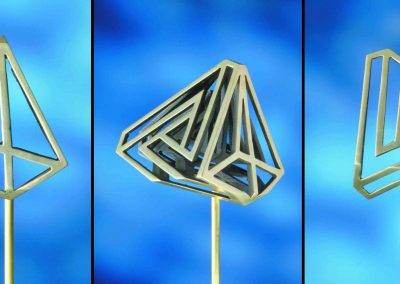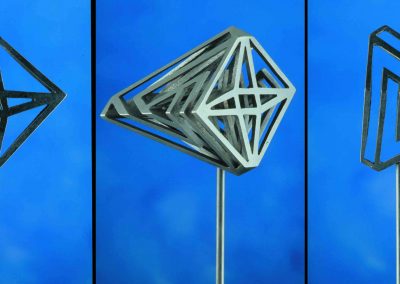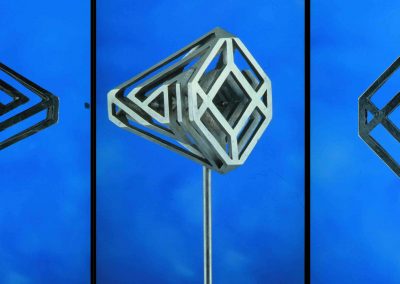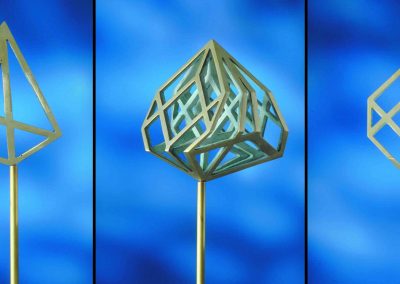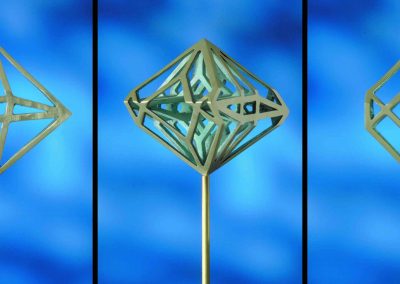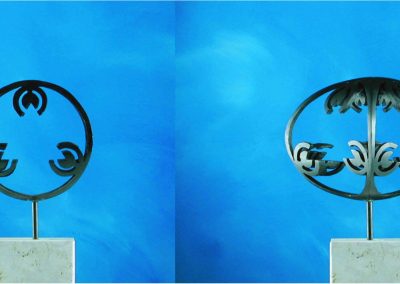Optical illusion
The method
This is another interesting development of my passionate research. I was able to create unknown “real objects” that somehow “contain” and show known and / or impossible “virtual objects”.
Again I like to remember where this discovery came from.
RicorI remember that one day I was in Desenzano D / G in the Civic Gallery where my personal anthological exhibition was set up. As usual, I talked to all interested people and explained my work. As usual, I got hot jumping from one sculpture to another trying to accompany visitors along the paths traveled by my mind and my hands.
Speaking, I also explained the sculpture Homage to Manfred Mohr but it turned out to be difficult because I didn’t have this artist’s catalog with me.
Subsequently, in a moment of pause and reflection, I found myself hypothesizing a further evolution of this experience of cultural exchange. I came up with the idea of ”copying” Manfred’s intuition, however, working with paths obtained from the cube instead of from the hypercube as he had done, then returning to the third dimension with the method of orthogonal intersections, intersecting in all possible ways some of these paths.
The project never followed up because I had the idea of starting with the first and most obvious “two-dimensional trace” obtained from a cube “the simple drawing of the cube in perspective”.
What seemed to be only the starting point of a research that I still intend to carry out, was actually the discovery of a new extraordinary and unpredictable world. The world of real and virtual solids. he world of real and virtual solids.
The thing that surprised me was that, despite the fact that at the end of the manufacturing process the design of the cube was no longer there having been molded in space, our brain continues to perceive the three-dimensional deception that was the prerogative of the two-dimensional design.
It is evident that in this case we can legitimately speak of unknown real solids that “show” themselves as known but virtual solids.
I owe to my friend Sergio Pea the idea of also using images of impossible solids such as Penrose’s tribarra.
Jokingly, I like to talk about real solids as “Martian” solids that on earth, if looked at from certain points of view, show themselves as solids known to us and therefore reassuring.

